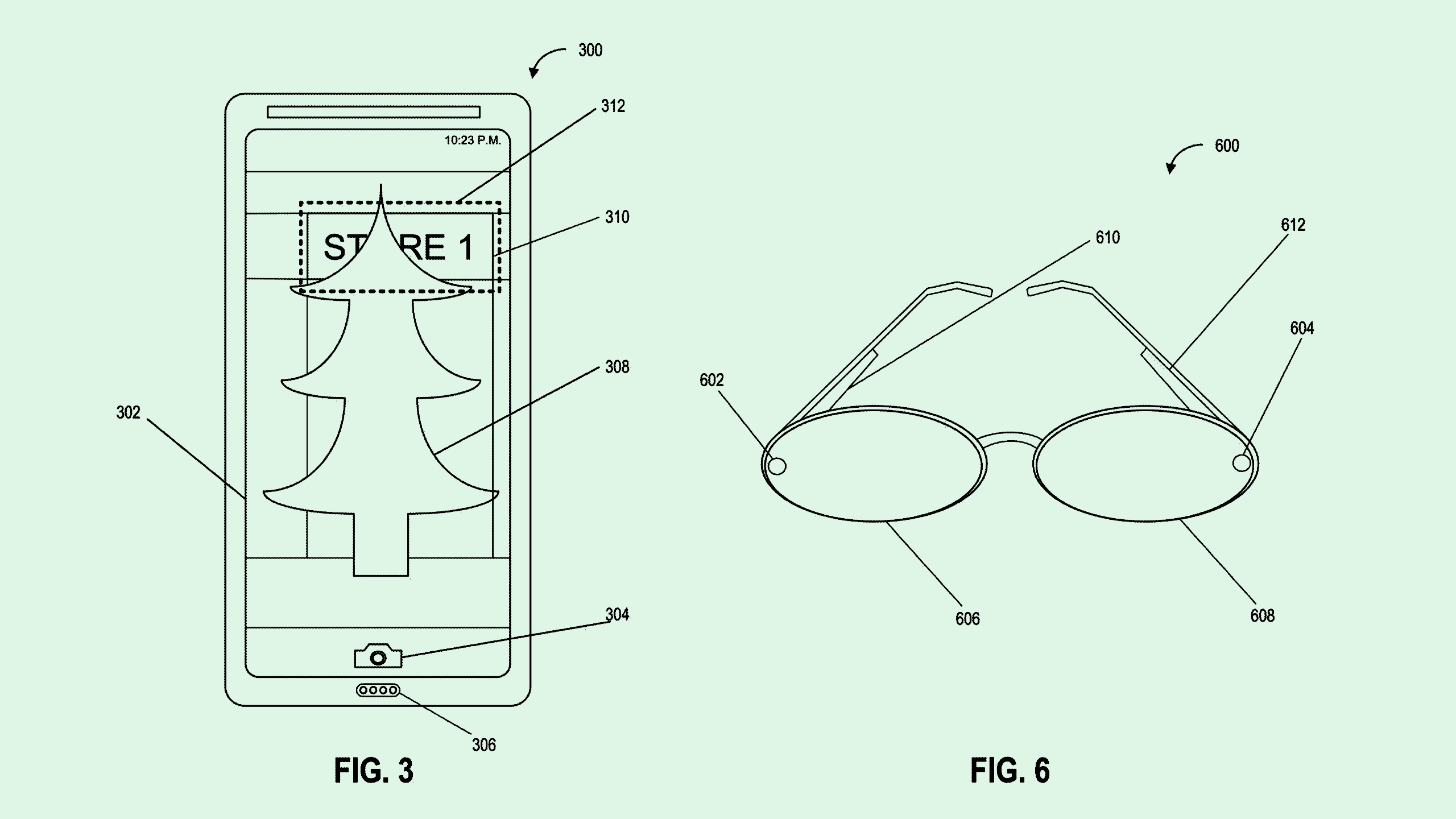Google AR Patent Highlights Potential Advantage in Smart Glasses Market
Google is giving smart glasses another go. Can it avoid mistakes of the past?

Sign up to uncover the latest in emerging technology.
Google wants to understand your surroundings.
The company filed a patent application for “augmented reality-based geolocalization of images.” The goal of Google’s tech is to help users capture better images of target areas, such as businesses or landmarks, using location data and augmented reality overlays.
“By formalizing the capture of images that represent the actual state of a target location, the accuracy of associated geolocalized images can be improved and the need for burdensome manual verification of geolocalized images can be reduced,” Google said in the filing.
The point of this tech is seemingly to crowdsource good images for Google Maps “without having to resort to manual inspection by a human due to the high quality of captured images,” the filing noted.
When a user wants to capture an image of a specific location, the system may give the user instructions on how exactly to capture that image using AR as a guide. For example, if it’s capturing an image of a business, the user may be instructed via their phone or smart glasses to get certain things in the frame, such as the address number or hours of operation.
That data may then be used to update data related to that location (likely through Google Maps). Along with adding the image to a location’s listing, it could collect and update information related to visiting hours or business type.
Google’s tech can create a symbiotic relationship between users and its mapping technology: While it could help beef up listings for the company’s GPS tech, it can also add value to the user experience by opening the door for AR activations and guides for users, said DJ Smith, co-founder and chief creative officer at The Glimpse Group.
Tech like this also shows a potential advantage that Google may have in developing augmented reality that sits atop real-world experiences, said Smith: its access to a vast amount of data through Google Earth and Maps. This factor may give it “a point of differentiation that the other large technology companies might not have,” he said.
And that edge may be particularly helpful as it joins the likes of Meta, Apple, and Snap in the competition to create mixed reality headgear that people actually want to wear. The company is working with Qualcomm and Samsung on a pair of mixed reality smart glasses that are linked to wearers’ phones.
Though Google’s glasses are meant to be a companion to a person’s phone, the push from big tech firms to create the next spatial computing device may signal that “our phones are getting to the end of their evolution,” said Smith. “With spatial computing, there’s this saying of ‘where you need it, when you need it,’ as opposed to buried without a phone.”
However, this isn’t the first time that Google has wanted to throw a set of spectacles into the mix. In order to avoid the missteps it took with Google Glass — and the nickname that came along with it — is an emphasis on privacy, said Smith. “They missed the mark on the security and privacy side of things. People didn’t want to be privately recorded by these devices.”











